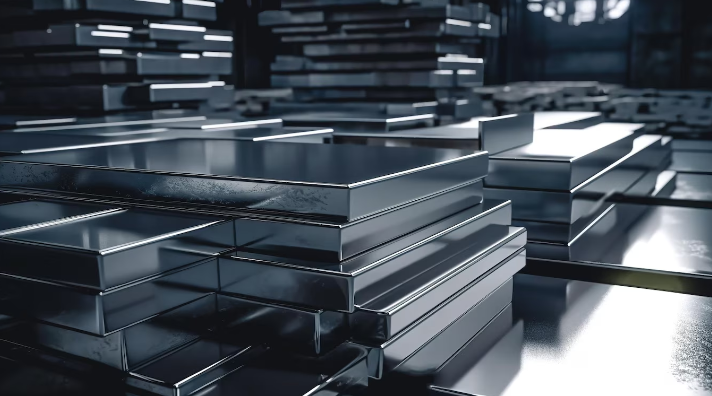Pulse Aluminum Anodizing for Energy Efficiency | Advint Incorporated
In the cutthroat world of manufacturing, companies are constantly racing to outperform their competitors. Raising the bar in terms of process efficiency, energy conservation, and product quality is a top priority. Aluminum anodizing, a cornerstone of surface treatment across various industries, has undergone a quantum leap in recent years. Pulse anodizing, a game-changing technique, is rapidly gaining traction for its ability to supercharge the efficiency and cost-effectiveness of traditional anodizing lines.
Conventional Anodizing
Before diving into the revolutionary pulse anodizing process, it is essential to understand the basics of conventional anodizing. Anodizing is an electrochemical process that forms a durable, corrosion-resistant oxide layer on the surface of aluminum parts. This protective coating enhances the metal’s durability, provides an aesthetic finish, and allows for various coloring options.
Traditional anodizing involves immersing aluminum components in an electrolyte bath and applying a constant direct current (DC). The process parameters, such as current density and duration, dictate the thickness and quality of the resulting oxide layer. While this method is effective, it often requires significant energy input and longer processing times, especially for thicker coatings.
Pulse Anodizing
Pulse anodizing introduces a groundbreaking concept by utilizing alternating high and low current or voltage pulses instead of a constant electrical input. This pulsating pattern creates unique conditions during the oxide layer formation process, offering several advantages over conventional methods.
Key Benefits of Pulse Anodizing:
Reduced Energy Consumption: Pulse anodizing optimizes current input, significantly decreasing the overall energy required to achieve the desired coating thickness.
Shorter Processing Times: The enhanced efficiency of pulse anodizing can reduce anodizing times by up to 30% or more, increasing production capacity.
Improved Coating Quality: The pulsating current allows for better control over the oxide layer structure, resulting in more uniform and denser coatings.
Flexibility in Process Control: Pulse anodizing offers greater flexibility in adjusting parameters to suit different aluminum alloys and desired finish characteristics.
Enhanced Wear and Corrosion Resistance: Pulse anodizing can significantly increase the wear and corrosion resistance of aluminum surfaces, making it highly beneficial for applications demanding robust durability.
Methods
There are three primary methods of pulse anodizing, each providing distinct advantages:
Low-Frequency Pulse Anodizing: This method involves pulsing between high and low current densities with longer pulse durations. It is particularly effective in creating a “double-decker” structure in the oxide layer, enhancing both thickness uniformity and corrosion resistance.
High-Frequency Pulse Anodizing: This technique uses high-frequency pulses, usually in the kilohertz range, with very short pulse durations. It is known for producing a more compact and uniform oxide layer, which is especially useful for hard anodizing applications.
Pulse Reverse Anodizing: Here, the current alternates between anodic and cathodic pulses, reducing the overall process time and increasing the oxide layer’s thickness. However, careful monitoring is required to prevent the destruction of the oxide layer by hydrogen ions generated during the cathodic phase.
Implementing Pulse
Implementing pulse anodizing in a conventional anodizing line involves several key steps:
Rectifier Upgrade: The heart of the pulse anodizing system is a specialized rectifier capable of generating the required pulsed current or voltage. This often necessitates replacing the existing power supply with a more advanced unit that can provide a wide range of current densities, from 2 to 20 A/dm².
Cooling System: The higher peak currents used in pulse anodizing generate more heat, requiring upgrades to the cooling system to maintain optimal electrolyte temperatures. Vigorous agitation methods, such as electrolyte flow eductors, can help maintain temperature uniformity.
Conductivity Improvements: To handle increased current loads, larger busbars and improved contact points between busbars and flight bars may be necessary.
Process Control: Extensive experimentation is crucial to determine the ideal pulse parameters for different aluminum alloys and desired coating specifications. Operators must be trained to understand pulse anodizing principles, manage the process effectively, and achieve the desired outcomes.
Energy and Circular Economy: Implementing comprehensive energy measurement systems helps quantify the energy savings and optimize the process further.
Sealing: When using pulse anodizing, the sealing process should not become a bottleneck. Adding an extra sealing tank may be necessary to handle the increased throughput.
Challenges in Pulse Anodizing
While pulse anodizing offers numerous advantages, there are also challenges to consider:
Recovery Effect: When switching from high to low voltage, a recovery effect can occur. It is essential to understand this phenomenon and adjust the process parameters accordingly to avoid prolonged recovery times, which can affect production efficiency.
Material Compatibility: Different aluminum alloys respond differently to pulse anodizing. Therefore, testing and optimizing the process parameters for each specific alloy is crucial to achieving the best results.
Monitoring and Quality Control: Real-time monitoring of the anodizing process is vital to ensure consistency and quality. Parameters such as current density, temperature, and electrolyte composition must be continuously monitored and adjusted as needed.
Future Trends and Innovations
As the aluminum industry continues to evolve, pulse anodizing represents a significant leap forward in surface treatment technology. Its potential for energy savings, increased productivity, and enhanced coating quality makes it an attractive option for manufacturers looking to stay competitive in a rapidly changing market.
Ongoing research and development in pulse anodizing technology promise even greater advancements.
Areas of focus include:
Tailored Pulse Patterns for Specific Aluminum Alloys:
Developing pulse sequences optimized for different types of aluminum alloys to maximize coating quality and performance.
Integration of Artificial Intelligence for Real-Time Process Optimization:
Using AI algorithms to monitor and adjust anodizing parameters in real time, ensuring consistent quality and energy efficiency.
Development of More Energy-Efficient and Precise Pulse Rectifiers:
Innovating rectifier technology to make pulse anodizing even more energy-efficient and capable of delivering highly controlled pulses.
Exploration of Hybrid Anodizing Techniques Combining Pulsed and Constant Current Phases:
Creating hybrid processes that leverage the benefits of both constant current and pulsed anodizing methods for specialized applications.
Conclusion:
Pulse anodizing is a game-changer in aluminum surface treatment technology. It tackles head-on the many challenges facing manufacturers today by slashing energy consumption, speeding up processing times, and supercharging coating quality. With the rapid advancement of technology and increased accessibility, widespread adoption across the aluminum finishing industry is just around the corner.
You may like also
Copper Electrowinning: Advanced Rectifier Systems and Power Supplies
Companies that jump on the bandwagon early will be ahead of the curve and well-positioned to weather the storm of future challenges.
Businesses that choose to implement pulse anodizing can reap the rewards of clear advantages like time and cost savings, improved product quality, and a competitive edge in modern metal finishing.
Pulse anodizing has the potential to revolutionize sustainable manufacturing in the aluminum finishing industry, offering energy savings, increased production capacity, and top-notch coating quality.

Posted By:Venkat Raja
Sep 09, 2024
Tags:







